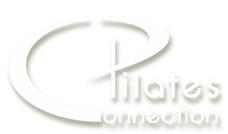
Why your body is like a game of Jenga
We recently came across an excellent article on Smart Healthy Women focusing on body alignment (one of our favourite topics of discussion in the Pilates studio, and with our Structural Integration clients.)
The article looks at how pain manifesting somewhere in our body is usually because of something we have done, or are not doing correctly. Here’s a reproduction of the article below, authored by Physical Therapist, Erin Burch. Enjoy the read:
My Body’s hurting – where have I gone wrong?
If your body’s hurting, you probably have something to do with it. Now I know it’s easy to think that it’s your body doing something to you, but the truth is that your body is a “perfect accountant.” In other words, it keeps track of every single decision, action, thought and emotion you’ve ever thought, felt and experienced, and that means that there could be a pattern or a habit that’s affecting you… So, if that’s the case, where do you go looking for the source of the problem?
An excellent place to start is… your Posture. Could it be that your mother was right? In fact, there is way more to posture than people think and it’s so much more important than people know. It’s a major ingredient to consider if you’re in pain and a major factor in keeping the signs of ageing at bay.
[Tweet “When we are working against the Design of the body…(and who isn’t?) we are making “withdrawals” from the structure, hoping that today is not the day it will come crashing down.”]
Do you recall the game, Jenga? It’s a game where there is a structure built of interconnected parts that stack and layer to make a tower. The game consists of systematically withdrawing pieces of the structure, hoping that this one removal will not bring it all crashing down. When we are working against the Design of the body…(and who isn’t?) we are making “withdrawals” from the structure, hoping that today is not the day it will come crashing down.
True alignment is like a stack of rocks that is balanced. It’s completely sustainable and holds on its own. It doesn’t require any struts or supports, it doesn’t require any glue. The alignment itself is strong enough to keep it stacked. That’s working with the Design of the body.
Your body is exactly the same.
Our Design has to do with alignment and stacking. Here are 6 tips for securing your posture and preventing untold misery!…
Tip 1: Let’s start with your feet. Look down at them and notice what direction they’re pointing in. If they’re doing something other than pointing straight forward, we’ll have to adjust them so they are parallel. And if you can make a closed fist, that’s the distance your feet should be apart from one another. Believe it, or not, that is actually hip-width (not what you’ve been taught, I know). Now, this may be a lot closer than you’re used to, and it might feel weird (many of these tips may feel weird), and in this case, “Weird” is definitely a good thing. We need to create change and what you’re feeling is just change in the making. Well done!
Tip 2: Moving on to the knees. Many women “lock” their knees (The technical term is “hyper-extension”). When the knees are locked, so many other structures lock up as well (ankles, low back, neck etc.). The desirable place for the knees to be is directly over the ankles, in a stacked configuration. The knees aren’t bent, but they are “soft.”
Tip 3: The next piece is to address the hips. Imagine the hips according to their design (ball in socket). Often times, the ball has migrated forward. Try to imagine moving the ball back over the knees, while lifting the tailbone a bit. Lifting the tailbone is something we’ve been taught NOT to do. This may feel particularly weird to lift the tailbone and bring the hip-ball back. In fact, it might feel like you’ve got a super-booty going on, but I assure you, a look in the mirror will help you sort out that it actually appears more aligned, regardless of how it feels.
Also, I want to put your mind at ease about what people fear about the dreaded Swayback. The vertebrae of the spine need to be stacked in a certain way to honor that design as well. There is a natural curve in the lower back and when that curve gets eradicated from tucking the tailbone, it can’t operate effectively and will degenerate. Most times, lifting the tailbone will not contribute to Swayback.
Tip 4: I want you to put your attention to the area just above the pubic bone in the lower abdomen. Place your hand there and breathe. If your breath is able to reach this area, you’ll likely notice that the abdomen expands on inhalation, and then gently deflates on exhalation. On the next exhaling breath, continue to “draw” this area in towards the sacrum. (I’m not advocating “sucking it in” but a gently engagement of this lower abdominal muscle.) See if you can keep a bit of engagement there throughout the rest of this stacking. This aspect of the Core Container ™ will gather all of the unnecessary and unconscious tension that tends to accumulate in the legs, feet, lower back.
Tip 5: The ribcage is the next thing to be stacked. This is an area where you’ve likely not spent a lot of time, energy or attention. And, it can be challenging to know where your body bits actually are in space and know what to do with them, especially if they are not normally on your radar, like your knees or feet are. Imagine that you are somehow able to look down on your body from a bird’s eye perspective. See your head and imagine that it’s stacked right above your ribcage, and that your ribcage is stacked right above your pelvis and that your pelvis is stacked right above your feet, so that all of the body bits are stacked neatly like the rock cairns you see at the beach.
At the base of the sternum, or breastbone, the ribs form an inverted “V” that when you breathe in, expand a bit outward, and then return on the exhalation. This is another part of the Core Container ™, which, when engaged, takes the tension out of the upper back, neck and shoulders. Pretty handy, right? At the end of the exhalation, engage this area and gently maintain this engagement.
Are you noticing that you are starting to have better posture? Awesome!
Tip 6: The last bit that we need to address is the shoulder girdle. This is a challenge because we are in the dual habit of using our arms and hands and using the shoulder muscles to support that movement. But I don’t know if you noticed, but after awhile (a few decades) this doesn’t feel that great. So, let’s engage the last bit of the Core Container ™ by engaging the area between the shoulder blades. This area is engaged by imagining “angel wings” at the shoulder blades and imagining them folded back. Like many of the other suggestions, this may feel strange. I get it. This takes a bit of practice, for sure, but you will be rewarded greatly, and your neck and shoulders will thank you!
When you add all of these tiny actions together, you have created a sound and sustainable way of standing… One that is strong, empowered and builds a body that will continue to serve you well many years into the future.
If you’d like to know more about body alignment, please call Liane on 0400 012 693, or speak to us when you’re next in the studio.

No Comments